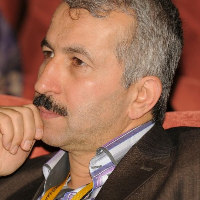The Effects of Transcranial Direct Current Stimulation (tDCS) and Biofeedback on Proprioception and Functional Balance in Athletes with ACL-deficiency
Following an anterior cruciate ligament (ACL) rupture, proprioceptive deficiency may be responsible for functional balance defects and joint instability. Recently, using transcranial direct current stimulation (tDCS) or biofeedback has been recommended for athletes with ACL rupture.
This study aimed to evaluate the effects of tDCS and biofeedback modalities while performing contraction exercises in athlete with an ACL rupture.
Thirty-three athletes with ACL rupture were randomly divided into three groups of tDCS, biofeedback, and control, with 11 people in each group. All groups underwent a ten-session training of intermittent contractions of the lower extremity muscles in a standing position at different knee angles, including 30, 45, and 90 degrees of knee flexion during four weeks. The control group received no tDCS or biofeedback modalities except the contraction exercises. All subjects were evaluated both before and at the end of interventions. The proprioception measured as rate of absolute error in the knee joint reconstruction was assessed by the digital photography technique at knee flexion angles of 30, 45, and 90 degrees. The functional balance was assessed by the star excursion balance test in eight different directions. All measurements were carried out on the injured limb.
The results showed no significant difference among three groups regarding all variables related to the proprioception and functional balance (P > 0.05). Intra-group comparison (before and after intervention) indicated that biofeedback significantly improved both the functional balance in all directions and the proprioception of the injured knee at three knee flexion angles (P < 0.05). Moreover, tDCS significantly improved the functional balance in six directions, except anterior-lateral and posterior, and also improved the proprioception at all angles of knee flexion.
Although the results did not show a large difference among groups, both tDCS and biofeedback modalities, along with intermittent isometric exercises, may have reduced knee absolute error at the knee flexion angles of 30, 45, and 90 degrees as well as improved the functional balance. Therefore, it was recommended that these modalities should be included in rehabilitation program targeting ACL-deficient knee subjects.
- حق عضویت دریافتی صرف حمایت از نشریات عضو و نگهداری، تکمیل و توسعه مگیران میشود.
- پرداخت حق اشتراک و دانلود مقالات اجازه بازنشر آن در سایر رسانههای چاپی و دیجیتال را به کاربر نمیدهد.


